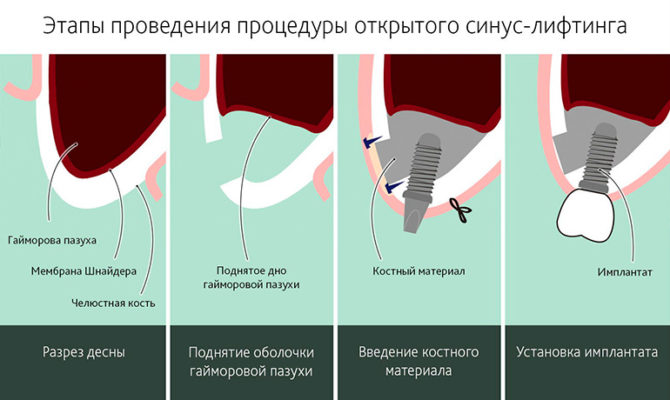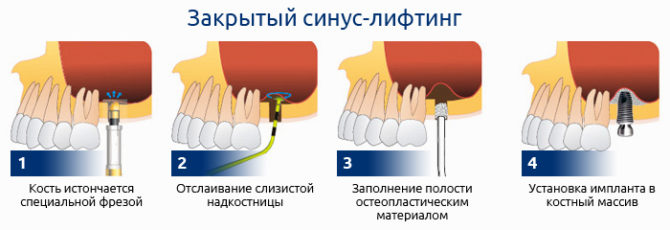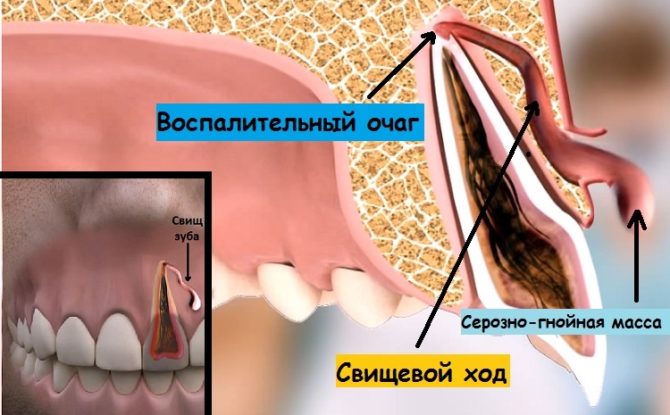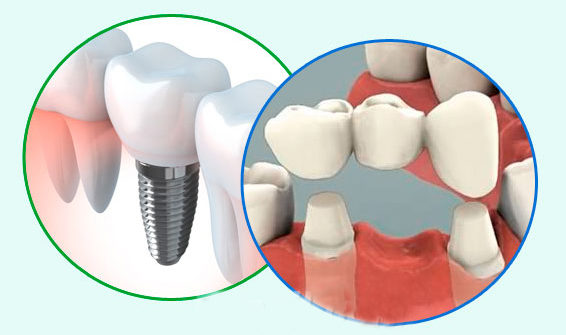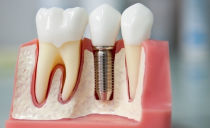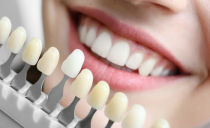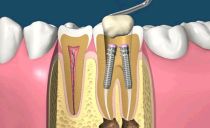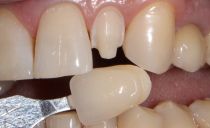Sinus lifting for dental implants
Installation of implants is one of the most difficult dental operations, because even preparation for it is fraught with danger. With missing bone mass to hold the implant firmly, the specialist prescribes sinus liftIts use in dental implants almost always guarantees good results in restoring a smile.
Content
- Sinus lift operation: what is it
- What is the difference between closed sine lifting and open
- What contraindications does the operation have
- How is open sine lifting performed?
- How is a closed sinus lift performed
- What complications are possible after surgery sinus lift
- What recommendations should be observed in the postoperative period
- Is it possible to avoid surgery
- How much is the operation
Sinus lift operation: what is it
Sinus lifting is a bone mass in the maxillary sinus. This is the name for voids in the skull, which are located near the nasal cavity and teeth. They are needed to alleviate the total mass of bones, protect the roots of the upper teeth and eyeballs from mechanical damage, and are also an additional sensory organ.
The lower part of the maxillary sinus and the alveolar processes in which our teeth are located are at a small distance. Sometimes this septum is exhausted and becomes unsuitable for implantation, and the sinus-lifting operation is just the solution to this problem.
Surgical intervention may be required for the following reasons:
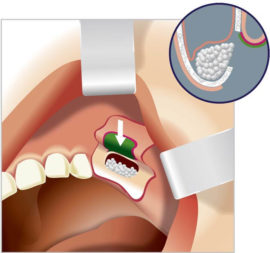 A large gap between tooth extraction and implant implantation. With an incomplete series, the load on the jaw is distributed unevenly, which is why bone depletion occurs.
A large gap between tooth extraction and implant implantation. With an incomplete series, the load on the jaw is distributed unevenly, which is why bone depletion occurs.- Long wearing removable dentures.
- Congenital form of voids.
- Chronic inflammation in the maxillary sinus.
- A natural decrease in bone mineralization in old age.
- Hormonal disorders.
In the presence of one or more of the listed factors, the patient is prescribed sinus lifting. There are two types of such an operation: closed and open. The choice between them depends on the complexity of the problem.
What is the difference between closed sine lifting and open
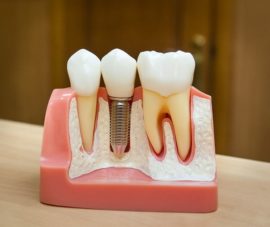 Open and closed sinus lift are different procedures. They are united only by similarities of the process itself and indications for the operation.
Open and closed sinus lift are different procedures. They are united only by similarities of the process itself and indications for the operation.
The difference lies in the thickness of the bone tissue, which must be increased. If for complete implantation of the teeth only 4 mm or even less is not enough, the patient is prescribed a closed type of procedure. It is also prescribed in case of simultaneous implantation, when restoration of a row is started immediately after tooth extraction.
Closed type is a safer operation. This is followed by a short recovery period, while with an open bone extension, the patient will have to follow the doctor’s prescription for several months. Along with this, further manipulations to restore the dentition are delayed.
An open sinus lift entails certain complications in almost all cases. A significant amount of bone tissue is already growing, and this requires serious surgical intervention. The procedure takes more time and is most often performed under general anesthesia.
What contraindications does the operation have
Sinus lifting is a complete surgical operation, so the procedure has a large list of contraindications:
- Bloodborne diseases.
- Coagulation Disorder.
- Poor metabolism and weak immunity.
- Low bone regeneration and all the diseases that lead to this.
- Oncology (with remission, closed sinus lift is possible).
- Close proximity of voids in relation to each other.
- Diseases of the cardiovascular system.
- Addiction to drugs and alcohol.
If you neglect these contraindications, serious complications after sinus lift cannot be avoided. It is better to choose other ways to restore the dentition.
There are also relative contraindications, in which the operation will simply be postponed to a more favorable time. These include:
- All diseases of the oral cavity and their individual symptoms.
- Any chronic diseases in the acute stage.
- Sinusitis, rhinitis, sinusitis, flu, colds and SARS.
- Temporary bleeding disorders.
- Nicotine addiction.
How is open sine lifting performed?
Although the open type of operation is more dangerous, it is they who resort to it most often, because the procedure also has high efficiency. The process itself is very different from the second type of building.
Under anesthesia, mucosal incisions are made from the outside of the jaw. A small flap of tissue exfoliates to expose the bone in the maxillary sinus. The photo below shows this process.
With the help of a drill, the specialist makes shallow round cuts in the desired area of the bone, while at the same time creating the shape of the future hole. It requires experience and skill so that there is no perforation of the mucous membrane of voids. The dentist needs to feel how deep the apparatus goes into the bone.
Then a small area of bone tissue is removed. The dentist exfoliates the mucous membrane from the bottom of the maxillary sinus, and artificial bone material is laid on its bottom. So they change the shape of the voids and at the same time increase the thickness of the jawbone.
It remains only to restore the protective layer of the sinus. Its lower part, which was separated earlier, is placed on a new bone. The dentist closes the hole in the jaw with a protective membrane, and the gum flap returns into place and sutures.
How is a closed sinus lift performed
The closed type of operation has several differences:
- It is easier to tolerate even by patients in old age.
- Minimum chance of serious complications.
- Only in rare cases after surgery is serious swelling or bleeding observed.
- It is performed under local anesthesia.
- You can install the implant immediately after bone growth.
- Immediate implantation is possible.
Despite all this, a sinus lift operation is not at all a painless procedure. It begins, as in the first case, with anesthesia. Then the dentist drills a hole in the alveolar process, into which the implant will be placed in the future, but strictly up to the mucous membrane of the maxillary sinus. It is very important not to violate the integrity of this protective layer.
The dentist lifts the lower part of the mucous membrane, thereby creating a free space for building. The formed void is filled with a special material similar to natural bone. The most commonly used bone chips of the patient, taken from other parts of his jaw. It is mixed with the mineral matrix of bovine bone, its use is necessary to increase the total volume of the mixture.
The composition is introduced through the hole created under the implant, as in the photo below.
Such a sinus lift operation is a completely safe process, therefore, sometimes implantation is performed immediately after it. At the end, the gum is sutured. The patient is given a number of recommendations for the postoperative period, and after a while he can go home.
What complications are possible after surgery sinus lift
The most common complication is perforation of the maxillary sinus membrane. It protects voids from viruses and bacteria. During the procedure, a specialist can damage this shell with a drill.It is not always possible to detect this immediately, so antibiotics are often prescribed to the patient to prevent the development of infection.
Pain, redness, or swelling after sinus lift are common symptoms. If all this is not accompanied by fever, you do not even need to consult a dentist.
Bleeding and fistula - this is a cause for concernespecially if they are present at the same time. Such symptoms require surgery by a specialist. If you do not fix everything on time, the consequences are:
- Poor implantation results, including removal of a foreign body.
- Chronic pain in the area of the restored tooth.
- Inflammation of the maxillary sinus, sinusitis and sinusitis.
To avoid complications, be attentive to your well-being throughout the postoperative period and follow the doctor’s instructions.
What recommendations should be observed in the postoperative period
Sinuslifting in dentistry is one of the most difficult operations due to the large number of mandatory requirements in the postoperative period. Regardless of the success of the procedure, the patient must observe the following rules:
- Do not eat or drink at least 3 hours after the procedure.
- In the first week you will have to eat soft or liquid foods at a comfortable temperature.
- Only the healthy side of the jaw should be chewed.
- Using a drinking tube is contraindicated.
- Smoking is banned all the time of recovery and before surgery, so nicotine addiction is a contraindication to sinus lift of the upper and lower jaw.
- To remove the swelling, apply ice to the inflamed cheek, but not more than for 5-10 minutes. It’s better to just repeat the procedure once every few hours.
- After each meal, take baths with an antiseptic prescribed by your doctor.
- Follow all recommendations of a specialist for taking antibiotics.
- Give up physical activity.
- Avoid yawning, sneezing, or puffing out cheeks. Try not to open your mouth too wide.
- Do not allow temperature changes, do not go to baths or saunas until the swelling is gone.
- Visit all dental appointments.
- In case of detecting warning signs, consult a doctor immediately.
Is it possible to avoid surgery
After studying what sinus lifting is in dentistry and why it is dangerous, many patients look for other solutions to their problems. Even the photo that depicts a fragment of the process is terrifying, so experts always offer an alternative, especially if there are serious contraindications.
Sinus lifting is performed before implantation. To avoid it, it is enough to cancel the subsequent operation to restore the dentition. Removable dentures can be used instead of implants, especially if several teeth are missing at the same time.
If it’s important for you to install implants, take a look at the basal type of implantation. With it, the support goes around the atrophied area of the jawbone. Implantation itself is a bit more complicated and more expensive, but you can install the crown in 2-3 days.
In dentistry and implantology, new developments are introduced every year. Very soon, even sinus lift of the upper jaw will have several safe analogues, and patients will have more choice.
How much is the operation
The cost of operations may vary several times. Clinics in Moscow and St. Petersburg will require 10 thousand rubles for closed bone building, but this is only for the work of a specialist. Another 5-7 thousand rubles are used to pay for materials and anesthesia. It is no longer possible to specify exact numbers, because it all depends on the specific case.
More complex bone growth usually costs 20-25 thousand rubles. Together with the materials, the operation costs around 50 thousand rubles, because in this case the bone composition is already very expensive.
Sinus lifting promises spending in the postoperative period.It is necessary to visit a specialist, take antibiotics, use antiseptics. This costs another 5-10 thousand rubles for the entire period.
Even high prices are not very upsetting, because once sinuslifting was a real discovery in prosthetics. Now, implants can be placed even by those who had never dreamed of a perfect smile.


